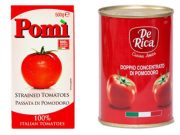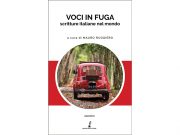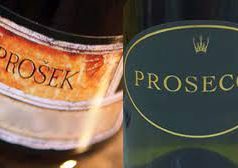One small consolation of “lockdown” has been the opportunity to try lots of different wines. Much as we all have our own favourites, it is most rewarding to try and discover something new and different. This is specially the case when so many parts of the world keep churning out very similar mass market wines often made by or in consultation with “travelling” wine makers. Sauvignon Blanc is now the biggest selling white wine in the UK and pretty well every country grows this grape varietal, some making more interesting wine than others. This is closely followed by Pinot Grigio and of course Chardonnay. Reds are the same with Merlot being the most popular grape, but interestingly Rioja, gene- rally a blend of more than one grape, is the UK’s best-selling red. Perhaps it is good marketing, but I suspect the more complex flavours, most often developed from ageing in oak barrels, appeals to the British taste and often works very well with British traditional cooking roasts, chops and stews.
When it comes to Italy, to say we are spoilt for choice would be a serious un- derstatement! There are just short of a thousand identified grape varietals grown, some 350 have been officially classified, leaving literally hundreds of very old and obscure varietals, and masses of different clones. I suppose it is not surprising as every region in Italy grows individual and often very different styles of grapes in the multitude of different climates. Grapes are grown from the foothills of the Alps and the Dolomites in the north; Aosta, and Trentino, right down to the toe of Italy; Calabria, Puglia and Sicily. With two of the most famous growing regions in the World, Piedmont in the north and Tuscany in the middle. Italy is the second biggest producer of wine in the World after France, and has a history going back to the Ancient Greek and Etruscan civilisations when they colonised Italy in around 800 BC, and
brought the Vitis Vinifera (the wine making vine ) firstly to Sicily and then coastal areas of Southern Italy. Some of those ancient Greek varietals, or at least closely related clones, still exist , in parts of Campania and Calabria in some small very old and remote vineyards, one can still find old vine training systems which go back over a thousand years. But the big expansion of grape growing for wine started with the Romans following their defeat of the Carthaginians in the second century BC. The Romans were masters of the art of wine making, using amphora as well as barrels to ship their wines around their ever expanding Empire. By the end of the first century AD the Romans had spread vine growing in a big way to France (Gaul) and Spain (Hispania), and even in England, mainly in the South, but there is evidence of grapes being grown up as far north as York for the use of the Legions guarding Hadrian’s Wall.
It is interesting to note that in the first century AD there was a period of about a hundred years of global warming, about two or three degrees average, which allowed this English wine production, but then it got cold again and vine growing died out. But then again, after the Norman conquest of England in 1066, there was another warm period, when the monks brought over from France and successfully planted and made wine in their Monasteries here. And today a million vines were planted in England last year and the English wine scene is booming, particularly for sparkling wine. So, nothing is new!
On the UK shelves for Italian wines it is wonderful to see so many of the exciting and interesting “new”, or should I say “old”, grape varietals are starting to appear. All the more delightful, as so many of these tastes and flavours go so well with the wonderfully diverse and delicious regional cooking found throughout the different Italian regions. For example, we have always enjoyed good Chianti with tomato or Bolognese sauces, the bright acidity in the Sangiovese, grape grown up in the cooler hills in Tuscany, going so well with the acidity in the sauces.
For white wines, never under-estimate a good Trebbiano, the grape behind Orvieto and often as a different clone, also blended with other varieties, as Frascati. But over the last few years I have fallen in love with the extraordinarily lovely, bright and complex Falanghina grape, mainly from Campania.My favourite is the Falanghina- Beneventana from around the area of Benevento to the north and east of Naples, it is a more complex clone than other Falanghinas. The Falanghina Taburno from a producer called MasseriaFrattasi is a wonderful example of this grape. Drink with sea food or shell fish or with good cheeses. (see; lamiaitalia.co.uk).
Also from the same region comes Aglianico.This great dark skinned red grape, is now felt to be right up there with Sangiovese and Nebbiolo as one of the Nobel and finest grape varie- tals in Italy, and I particularly love the Aglianico from the Taurasi region for it’s elegance, structure and ability to age well. A fine example is made by Tenuta del Merrigio and found at Zo- nin.co.uk.
The other whites seriously worth finding are Arneis from Piedmont, Catarratto Bianco from Sicily, Pecorino from Abruzzo right down into Tuscany, Vernaccia di San Giminiano in Tuscany. For the reds; Refosco dal Peduncolo-rosso from Venezia Giulia and Friuli, Lagrein from Trentino, and Frappato in Sicily. Of the near to one thousand Italian grape varietals, I hope you will find these exciting, and try to find some good dishes to accompany them from the same region, it generally works best.
Finally all sparkling wines are booming, led by Prosecco, English Sparkling Wine, and French Cremant. Champagne has some serious competition. But you must try the wonderful fizz from Trento, the Trento DOC is up there quality wise with top Champa- gne, made in the same way, bottle fermented, aged and later disgorged and from the same grapes as Champagne. It’s cool high altitude up in the Dolomites is often cooler than Cham- pagne, and maybe this resistance to global warming temperature rises will make this the most sought after fizz of all. Try Ferrari Brut NV, 100% Chardonnay. Ferraritrento.com.
Bravo to the Italian wine makers for keeping all this variety and not fol- lowing trends found in many other countries to forget their heritage and this diversity.
LOVING WINE By CHRISTOPHER BURR, MASTER OF WINE.
THE JOY OF DIVERSITY OF ITALIAN GRAPE VARIETIES























